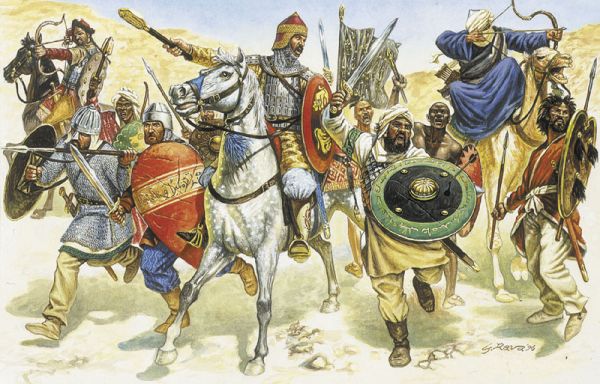On the 19th of September, 634, the city of Damascus fell into the hands of the growing Caliphate. Its conquest was a turning point in history and marks the expansion of the Caliphate into the Middle East and Africa.
The Arab expansion in the region was the birth of the world we know today. This expansion created one of the biggest empires the world has seen.
Prelude to the Arab Conquest of Damascus
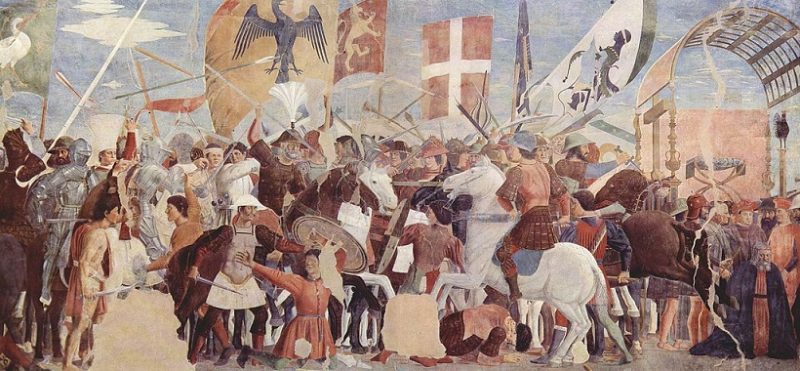
The beginning of the 7th century is marked by the Byzantium-Sassanid wars. The two empires were in constant conflict over the decades and did not pay much attention to the rising threat. Their territorial conflicts and battles ended too late in 627 and left them completely unprepared for what was coming.
Meanwhile, the Prophet Mohammad successfully united the Arabs. By the time of his death, most of the Arabia was already under a single religiopolitical authority. Although the passing of the Prophet was the reason for separation in the Islamic teachings, it was also the inspiration of the Arab conquest. Abu Bakr, who was at the time chosen for his successor by some of the followers, started his movement in 633. His primary targets were the Sassanid Empire (Persia) and the Byzantine Empire (Rome).
Abu Bakr moved quickly and successfully on the road of conquest. The Persian province of Iraq became an Arab dominion, and then the Arabs entered the Byzantine Empire. After routing the Roman army and capturing significant territories, they now stood in front of the Damascus. Abu Bakr is supported by his capable general Khalid ibn Walid.
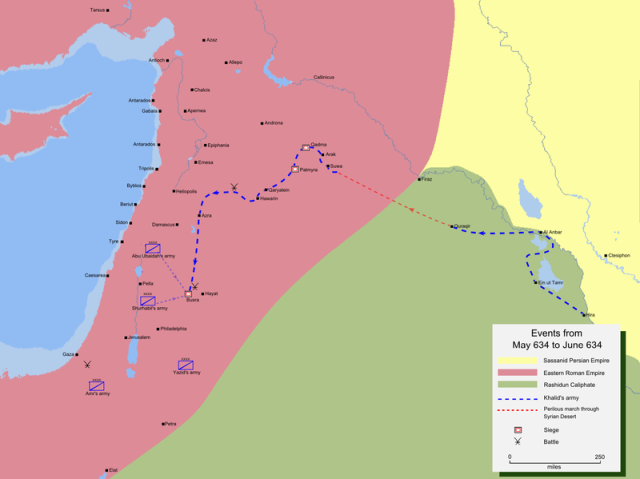
The Siege of Damascus
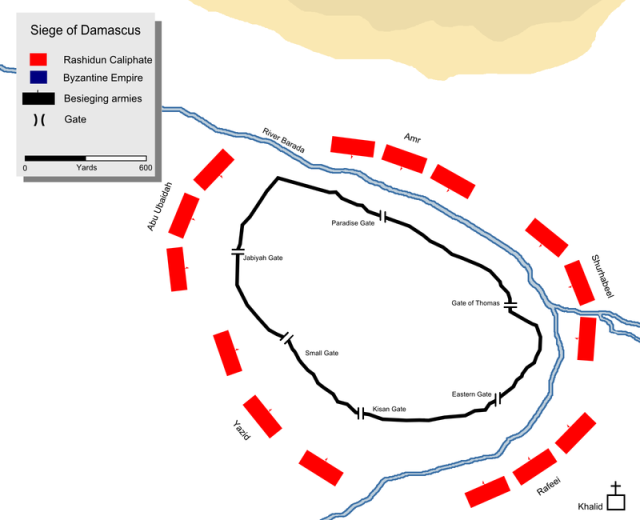
Khalid knew well that his army lacked the siege weapons to take down the fortified Byzantine city, so he took another approach. The Arab conquerors surrounded the city from all sides and cut off all supply and communication. By the end of August 634, Damascus was already completely cut off from the rest of the empire. The Arabs tactic was simple- starve the city until they surrendered. All six gates to the city were heavily guarded and ordered not to let any Byzantine force reach the city.
At the beginning of September, the Roman Emperor Heraclius had sent an army to lift the siege. Khalid, gathering some 10,000 of his men successfully attacks the Byzantine army from two sides and destroys it. His quick victory and fast cavalry allow him to return to the city before the defenders could even organize any offensive.
A week later, the commander of the Roman garrison in Damascus decided to break the siege line of Khalid. The offensive of the defenders was in two consequent waves and days, but to no victory. The commander himself, Thomas, was injured by an arrow in his eye.
During the night of 18th to 19th of September, the city was celebrating a festival. Khalid saw in that a perfect opportunity to storm the city. So he personally led a charge on one of the gates. In no time at all, he would manage to enter the city. Thomas, desperately trying to save the city approached the commanders of Khalid. He convinced Khalid to spare the city, for the other Christians cities would quickly organize against the Muslim conquerors.
The commander persuaded Khalid, and he agreed to occupy the city, but without killing the locals or destroying Christian temples, and let everyone who wanted to leave the city unharmed. The so called piece was agreed to last for three days, during which all to decided whether they stay or to leave. The moment those three days passed, Khalid made sure to get rid of refugee convoy.
Aftermath
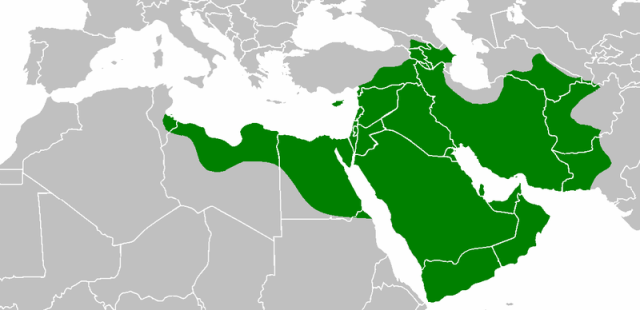
Damascus became a cultural center for the Islamic religion, being first appointed capital of Syria and later the very capital of the mighty Umayyad Caliphate. It was used as a consolidation of the Arab culture, language, and newly found Islamic religion.
After the Battle of Yarmouk and the tactically great victory of Khalid against the Byzantine forces of Heraclius, the outcome of the conquest was clear.
Spreading of Islam
The fall of Damascus served as a major point in the Islamic history. It consolidated the Islamic religion in the region and its spreading across the lands of the Middle East and Africa. Allowed the stabilization of the future all-mighty Caliphate to gain unstoppable power and conquer the Persian Empire.
The Arab conquest drenched the lands they cross with blood and accelerated the following Islamic expansion for centuries to come. By 750 the Islamic expansion had already taken the entire Middle East, North Africa and parts of Asia. For less than 100 years it changed the future of the world.
Arab Expansion
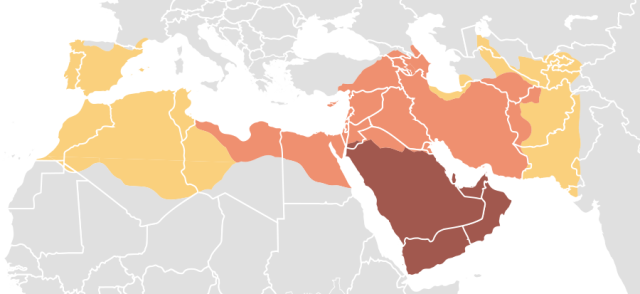
The unification of Arab people, the expansive policy of their leaders, the promises of the teachings, were the main source of countless wars throughout the centuries. The Arab conquest of the Persian Empire had a paramount impact upon it and the neighboring lands.
Looking into the past, the beginning movements of the Arab conquerors through the lands of the Middle East settled the Islamic religion and the countries we now see on the map.
Conclusion
The easy fall of both Empires was also due to the fact they failed to recognize the threat and dealt with it timely. During their wars with each other, the Byzantium and Sassanian Empires continuously needed to rebuild their armies, since they suffered heavy losses after each clash. Possibly one of the main reasons the Arab conquest broke through their lands so easily and took them is exactly the decades of war between the two.
While the Arab invaders were highly motivated and strongly united, the lands for which the two Empires fought all the time were left lacking in everything. There was no strong and consolidated power in neither imperial territories the Arabs captured.
The quickly expanding Caliphate turned into one of the most powerful forces in the Middle East.
